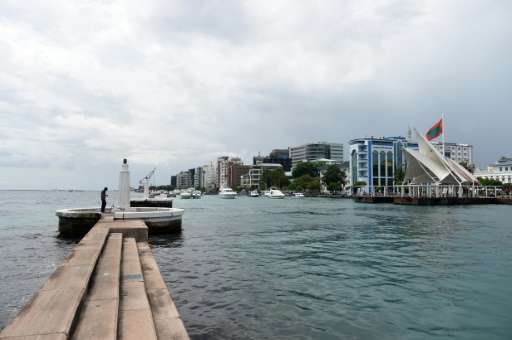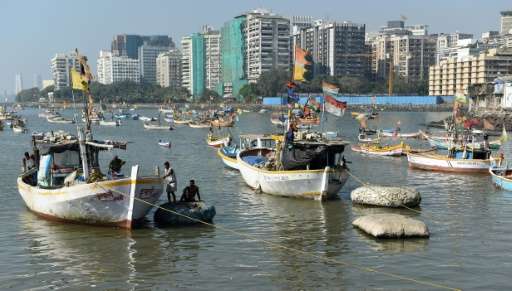Rising seas set to double coastal flooding by 2050: study

Rising sea levels driven by global warming are on track to dramatically boost the frequency of coastal flooding worldwide by mid-century, especially in tropical regions, researchers said Thursday.
A 10-to-20 centimetre (four-to-eight inch) jump in the global ocean watermark by 2050—a conservative forecast—would double flood risk in high-latitude regions, they reported in the journal Scientific Reports.
Major cities along the North American seaboard such as Vancouver, Seattle, San Francisco and Los Angeles, along with the European Atlantic coast, would be highly exposed, they found.
But it would only take half as big a jump in ocean levels to double the number of serious flooding incidents in the tropics, including along highly populated river deltas in Asia and Africa.
Even at the low end of this sea rise spectrum, Mumbai, Kochi and Abidjan and many other cities would be significantly affected.
"We are 95 percent confident that an added 5-to-10 centimetres will more than double the frequency of flooding in the topics," lead author Sean Vitousek, a climate scientist at the University of Illinois at Chicago, told AFP.
Small island states, already vulnerable to flooding, would fare even worse, he added.
"An increase in flooding frequency with climate change will challenge the very existence and sustainability of these coastal communities across the globe."

Coastal flooding is caused by severe storms, and is made worse when large waves, storm surge and high tides converge.
Hurricane Sandy in the United States (2012), which caused tens of billions or dollars in damage, and Typhoon Haiyan in the Philippines (2013), which left more than 7,000 dead or missing, both saw devastating flooding.
Rising seas—caused by the expansion of warming ocean water and runoff from melting ice sheets and glaciers—is also a contributing factor.
Sea level 'wild card'
But up to now, global estimates of future coastal flooding have not adequately taken into account the role of waves, Vitousek said.
"Most of the data used in earlier studies comes from tidal gauge stations, which are in harbours and protected areas," he explained. "They record extreme tide and storm surges, but not waves."
To make up for the lack of observational data, Vitousek and his colleagues used computer modelling and a statistical method called extreme value theory.
"We asked the question: with waves factored in, how much sea level rise will it take to double the frequency of flooding?"

Not much, it turned out.
Sea levels are currently rising by three to four millimetres (0.10 to 0.15 inches) a year, but the pace has picked up by about 30 percent over the last decade.
It could accelerate even more as continent-sized ice blocs near the poles continue to shed mass, especially in Antarctica, which Vitousek described as the sea level "wild card."
If oceans go up 25 centimetres by mid-century, "flood levels that occur every 50 years in the tropics would be happening every year or more," he said.
The US National Oceanic and Atmospheric Administration (NOAA) predicts global average sea level will rise by as much as 2.5 metres (98 inches) by 2100.
Global average temperatures have increased by one degree Celsius (1.6 degrees Fahrenheit) since the mid-19th century, with most of that happening in the last 70 years.
The 196-nation Paris Agreement, inked in 2015, calls for capping global warming at well under 2C (3.6F), a goal described by climate scientists as extremely daunting.
More information: Scientific Reports (2017). nature.com/articles/doi:10.1038/s41598-017-01362-7
Journal information: Scientific Reports
© 2017 AFP



















